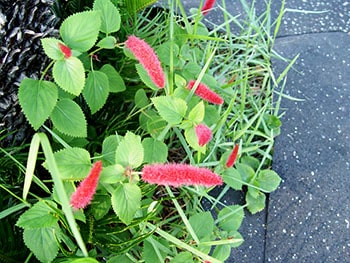
Florida Garden Talk Q & A, Nassau County Extension
EDITOR’S NOTE: Environmental Horticulture Agent III, Rebecca Jordi, addresses questions about landscaping and gardening in northeast Florida. She is the Extension Director in Nassau County, Florida and also a University of Florida faculty member.
QUESTION: Rabbits are eating my Asiatic jasmine. What can I do? TS
JORDI: As youngsters, we have learned to love these furry little critters but now as landowners we have a very different perspective. I have a few hints which should help:
1. Removing dense, heavy vegetative cover, brush piles, weed patches, junk dumps and stone piles adjacent to the landscape will help eliminate rabbit habitats.
2. Fencing made from chicken wire, with mesh less than 1″, can be placed around a vegetable garden or herbaceous plant border. The fence must be at least 2′ high with the bottom buried at least 3″ deep.
3. You can also use cylinders of 1/4″ wire hardware cloth extending higher than a rabbit’s reach by placing them around the trunks of individual trees and shrubs. Bury the bottom of the cylinders 2″ to 3″ inches below ground level and place them 1″ to 2″inches from the trunk.
4. There are a few plants rabbits don’t particularly like: yarrow, aster, wild indigo, daylily, geranium, iris and sedum.
5. There are plenty of things on the market which supposedly repel deer and rabbits such as products containing capsaicin, which is the main ingredient in hot chili peppers. But we have no extensive research to support their claims.
QUESTION: I am having a terrible time with the squirrels eating the bark from my maple and oak trees. What can I do? NT

Although squirrels may be amusing to watch (except when they are eating my bird seed); they can indeed damage trees significantly. They typically strip bark during winter and spring but there is no reason to think this could not occur any other time of year. Deciduous trees with smooth bark sustain the most damage, but other trees can be targeted. Remember, deciduous trees are the ones dropping their leaves in the fall. Twig clipping occurs most frequently in spring and early fall.
Fortunately, trees can sustain damage up to 50 percent of the trunk’s circumference and foliage losses up to 30 percent without significant impacts. If the squirrels chew more than 50% of a limb it is possible for the limb to die and ultimately break off and fall to the ground.
Landowners can prevent damage to trees by installing metal collars. The metal collars can be used to encircle trees and prevent squirrels from traveling up and down the limb. Collars should be at least 2 feet wide and placed 6 to 8 feet above the ground. Collar edges should be overlapped and connected by springs to allow for tree growth. These same types of collars could be placed on the limbs.
QUESTION: What can you tell me about the chenille plant? I am thinking about putting it in my yard. CC

The dwarf plant grows to about 6 inches whereas the standard variety can reach heights up to 6 feet. It prefers partial sun to part shade and can tolerate most any type of soil. Keep the soil moist but well-drained. It is slow growing and I believe in Northeast Florida, it would be better suited for a hanging basket rather than putting it in the ground. Most likely it will die back in the winter and probably not return so you need to treat it like an annual. However, you might get lucky and get a season or two out of it but do not be surprised if it does not survive our winters. It really has no serious disease issues but scale, aphids and mites can be potential problems. Read more about Dwarf Chenille Plant at University of Florida IFAS Extension.

Nassau County Extension Director
UF/IFAS Environmental Horticulture
543350 U.S. Highway #1
Callahan, FL 32011
904-530-6350
http://nassau.ifas.ufl.edu
The Extension provides practical education you can trust, to help people, businesses and communities solve problems, develop skills and build a better future.
